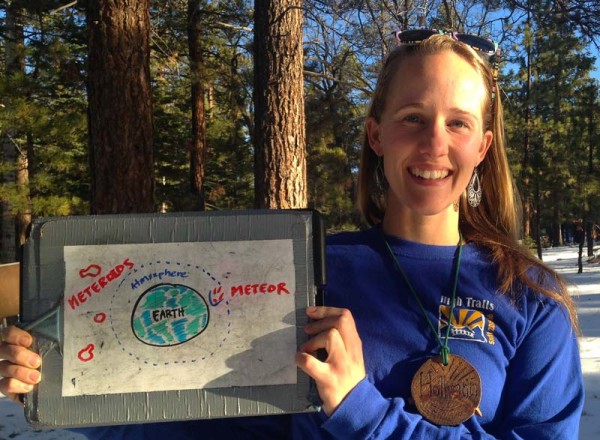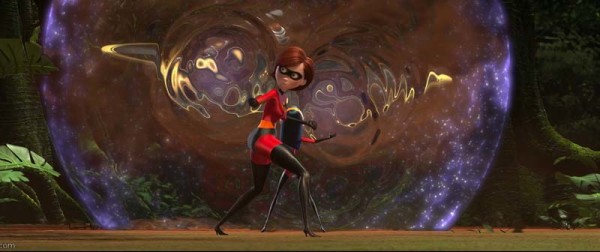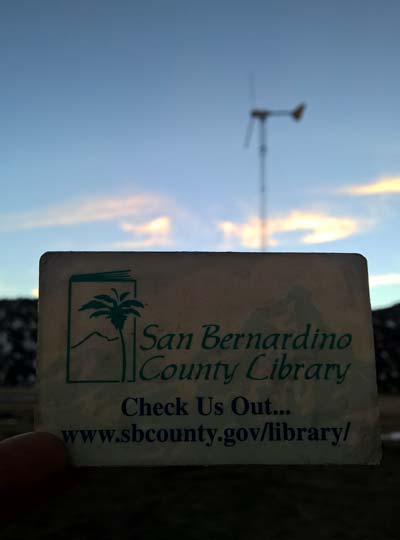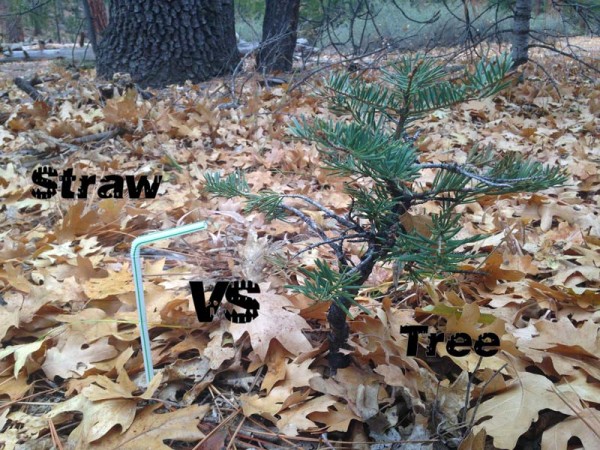A streak of light burns bright and brief across the night sky. A collective gasp comes from the group of students huddled in the darkness as they exclaim, “a shooting star!”
 As we discuss that shooting stars are actually space rocks called meteors, I tell my cabin group that these meteors rarely make it all the way down to Earth’s surface because of something around the earth that works just like a force field.
As we discuss that shooting stars are actually space rocks called meteors, I tell my cabin group that these meteors rarely make it all the way down to Earth’s surface because of something around the earth that works just like a force field.
“And what is a force field’s job?”
“To protect whatever is inside of it.”
“Exactly. The earth’s atmosphere protects the earth, just like a force field protects the person or object inside that force field.”
We aren’t in a sci-fi movie, but somehow every student suddenly understands that there’s a huge, invisible bubble surrounding us that shields us from those meteors. Earth’s ‘force field’ burns up the rocks as they enter our atmosphere, protecting the surface of the earth and leaving behind a streak of fiery light in the process.
Through this simple analogy, something as big and complex as the earth’s atmosphere may begin to make a bit more sense to our students.

Hello Analogy.
Now what exactly is an analogy, and how can you use them as an effective teaching strategy? If you think back to that middle school grammar lesson, you may recall a fill-in-the-blank exercise that looks like this:
grass is to green as sky is to _________
Although the answer to this logic exercise may seem obvious, we can expand upon this basic idea to make comparisons that show similarities between two objects or concepts. By showing similarities between something known by our students (ex. a force field) and something unknown (e.x. the earth’s atmosphere), we can make abstract scientific concepts understandable and tangible to 5th and 6th grade learners.
Some analogies are built straight into our lesson plans.
For example, we ask students to think about rocks and the minerals that make up those rocks, just like cookies and their ingredients.
Now the trick is to take that simple analogy and run with it—explain that all cookies are made up of different combinations of similar ingredients, but can be cooked at different temperatures or in different shapes, just like rocks made up of various minerals undergo different processes that lead to their final state.
Continue the analogy as long as plausible: Some rocks are formed by heat and pressure, like a cookie that was baked in an oven. Some rocks are made up of layers of different minerals, like cookies that have layers of caramel, chocolate, and crust. By extending the analogy and even revisiting it later in the class, instructors can build a solid comparison between these two objects, helping students both understand and remember how rocks are formed.
 Going beyond the lesson plan, a great place to find analogies is to ask the students. Asking students to come up with a comparison themselves gives them ownership of that idea and makes it more likely they will remember that analogy in the future. For example, when defining renewable and non-renewable resources, ask the students what the word renew reminds them of.
Going beyond the lesson plan, a great place to find analogies is to ask the students. Asking students to come up with a comparison themselves gives them ownership of that idea and makes it more likely they will remember that analogy in the future. For example, when defining renewable and non-renewable resources, ask the students what the word renew reminds them of.
 “Renewing a library book!”
“Renewing a library book!”
“Exactly, so then what does it mean to renew?”
“It means you can check it out and read the book again and again.”
“Just like renewing a library book, we can use renewable resources again and again.”
Wind energy, a renewable resource, is not exactly the same as a library book, but analogies don’t have to be a perfect comparison to be successful.
The important part is that students make a connection between two concepts and recognize the elements they have in common, leading to a better understanding of the concept they are learning about.
Remember, 5th and 6th graders already know a lot.
The key to using analogies as an effective teaching technique is to use those things they DO know to help them understand the things they don’t yet understand.
So next time you try to explain transpiration or echolocation, skip the dictionary definitions and instead compare trees to straws or bats to submarines. Nature is full of parallels to our everyday lives; when you take a moment to look for those connections the only limit is your imagination!
 At High Trails Outdoor Science School, we literally force our instructors to write about elementary outdoor education, teaching outside, learning outside, our dirty classroom (the forest…gosh), environmental science, outdoor science, and all other tree hugging student and kid loving things that keep us engaged, passionate, driven, loving our job, digging our life, and spreading the word to anyone whose attention we can hold for long enough to actually make it through reading this entire sentence. Whew…. www.dirtyclassroom.com
At High Trails Outdoor Science School, we literally force our instructors to write about elementary outdoor education, teaching outside, learning outside, our dirty classroom (the forest…gosh), environmental science, outdoor science, and all other tree hugging student and kid loving things that keep us engaged, passionate, driven, loving our job, digging our life, and spreading the word to anyone whose attention we can hold for long enough to actually make it through reading this entire sentence. Whew…. www.dirtyclassroom.com

Comments are closed.